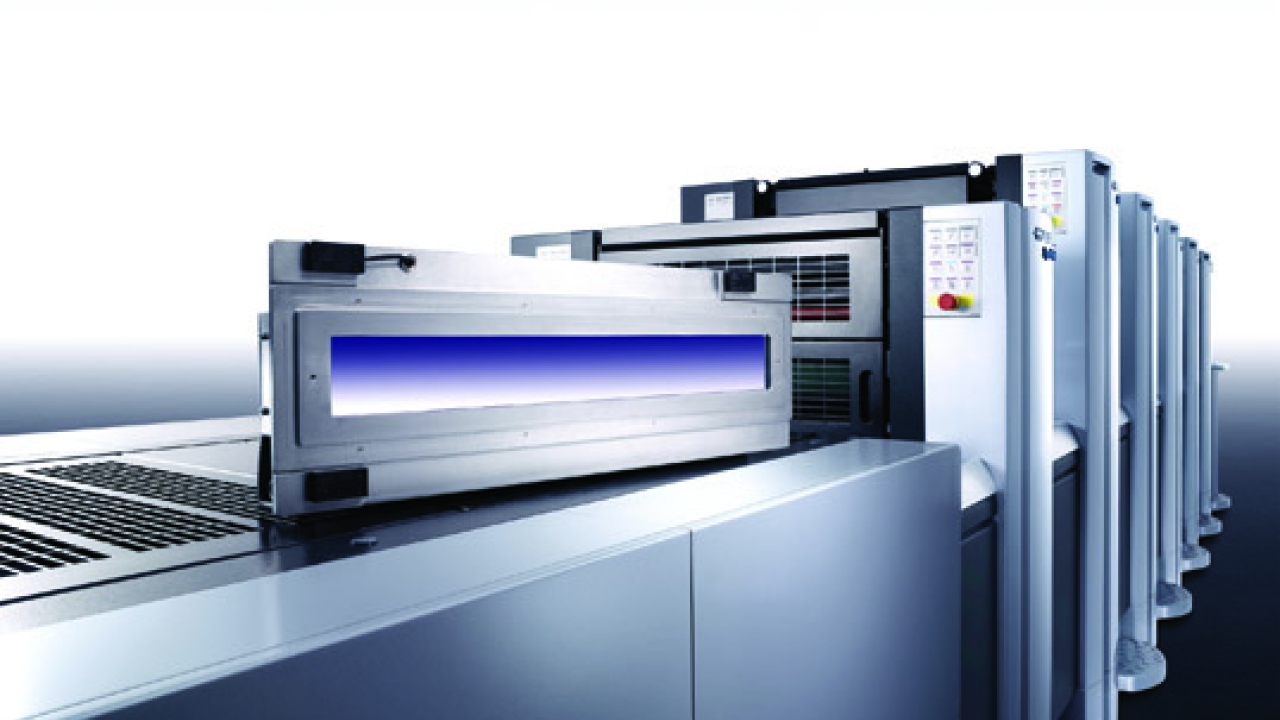Tomorrow’s technology today

Heidelberg is taking an active role in shaping the future of print with cutting-edge technologies and processes. David Pittman reports
At Drupa 2012, German machinery manufacturer Heidelberg presented an array of innovations designed to showcase printing technologies for today, tomorrow and the future.
Its Innovation Gallery, which supplemented the hardware exhibited in hall 1 at the quadrennial international print industry tradeshow, was focused on application-orientated topics, and included a number of products and systems demonstrating areas such as surface finishing and printed electronics.
The Innovation Gallery has now been transferred to its research and development building in the city of Heidelberg, Germany, and will cover other topics and market segments, and highlight their future potential.
Heidelberg believes that what is on show offers huge potential for manufacturers of branded goods, advertising agencies and print media companies, and is looking to enter into dialog with these groups to go beyond the conventional image of print and provide a glimpse of the progress being made in its research laboratories.
At the end of 2012, Heidelberg invited members of the international press to visit its facilities in Wiesloch-Walldorf and Heidelberg itself, where Martin Schmitt-Lewen, senior manager of technologies for future business, discussed progress made in three segments, drying and structuring, graphic arts decoration and functional printing, since Drupa in May.
The future
The 'future of functional printing' is presented in the shape of a film-based lighting element, which utilizes electroluminescence or printed OLEDs. It could be applied to folding cartons either as a solid area or as numbers, text or logos, while Heidelberg is now working on advanced concepts for decorative light covering a larger area.
In the field of drying and structuring, optoelectronic devices, through digital laser imaging chips that allow the control of individual lasers, are heralded as the future. These systems permit the partial drying or structuring of surfaces, and their digital multi-channel modular nature opens up the possibility of future applications in digital imaging, Heidelberg says.
3D printing, surface decoration using non-contact inkjet, completes Heidelberg’s future-gazing. The technology permits conventional high-speed industrial printing’s transition to printing on potentially any curved surface, with the customization of everyday objects, from toys and automotive parts to industrial and architectural elements, possible. It could also pave the way for new packaging shapes and products.
Tomorrow
While 3D printing, printed light elements and controllable laser drying are long-term technologies, there are those that are much closer to becoming a reality.
A laser drying module that only heats the ink, and not the substrate so reducing the time needed between press and post-press operations, is one such product. Another is holographic printing using microembossing to create an effect similar to lenticular printing.
Tomorrow’s functional printing technology will involve smart shelves, which allow packaging and shelves to communicate directly with each other.
Using a Gallus flexo press, printed electronics are the cornerstone of this development, with a folding carton, for example, printed with components that complement those on the shelf. These then communicate information, such as stock levels, or activate cross-marketing promotions to allow a consumer to interact with a product and receive additional information.
Today
Technologies on show as part of Heidelberg’s Innovation Gallery are not solely focused on potential applications but also include those that are available today. Energy-efficient UV LED drying technology is already in use, while Cristala and Touchcode are products from the graphic arts decoration and functional printing areas that are market-ready.
Cristala is a concept developed for creating new effects on printed packaging, and is described as being 'unique in the sheet-fed offset industry'.
Using existing drip off coating equipment from the sheet-fed offset market, specially prepared pre-press data is used to create structured surfaces with a strongly accented gloss effect, while also allowing gloss and matte finishes to be applied together on one sheet. The structured coatings then create different gloss effects depending on the angle of inclination and the direction of viewing.
Touchcode shows the convergence of electronics with printed matter. Touchcode, developed by Heidelberg with Printechnologics and marketed as 'paper goes digital', is an invisible electronic code printed on paper, cardboard, film or labels. By putting the code on the display of a smartphone, tablet or other touchscreen device with the correct software installed, users create an interaction between their electronics and printed matter that can start a promotion or launch additional content, such as videos or audio.
Ticketing, brand protection and consumer products are listed as core segments that Touchcode can be deployed in, but there are no limitations to its use according to Heidelberg and Printechnologics, while the technology itself can be provided as a stand-alone business card-sized tag, or integrated directly within packaging and labels.
Schmitt-Lewen says Touchcode provides a more consumer-friendly interaction than QR codes as it is a paper key placed on the display of a device, rather than an interface requiring an action by the user, such as taking a photo or scanning a barcode.
Frank Kropp, head of research and development at Heidelberg, says the technologies on show as part of the Innovation Gallery underpin the manufacturer’s commitment to the future of print.
‘We are making it clear that print has a real future and that we will play an active role in shaping this future.
‘This applies to conventional and functional printing, and to the printing of decorative elements,’ concludes Kropp.
David Pittman is news editor of Package Print Worldwide, Labels & Labeling’s sister publication. Find out more at www.packprintworld.com.
This article was published in Labels & Labeling issue 1, 2013
Stay up to date
Subscribe to the free Label News newsletter and receive the latest content every week. We'll never share your email address.

